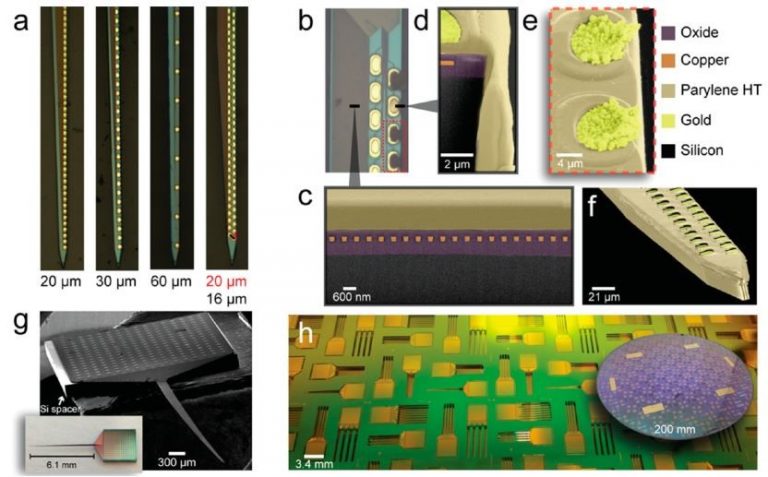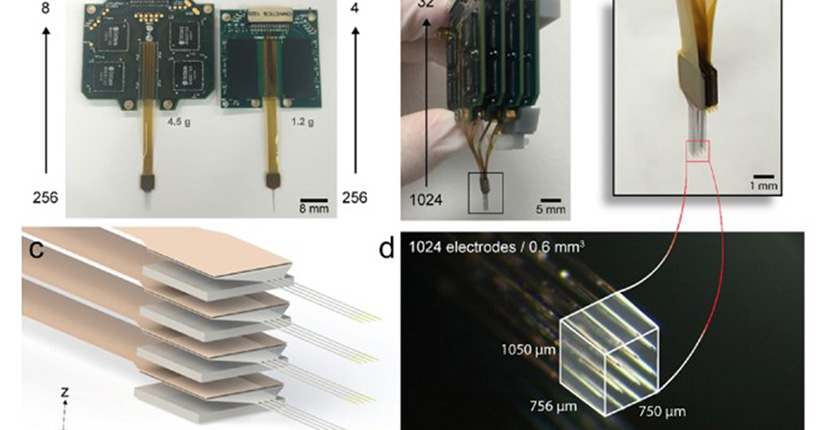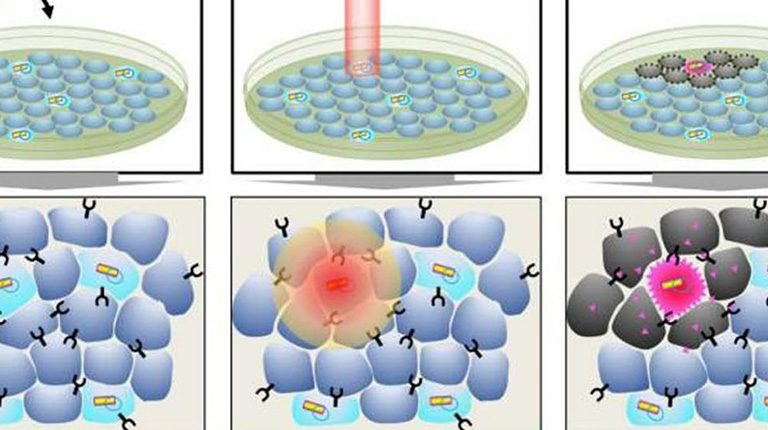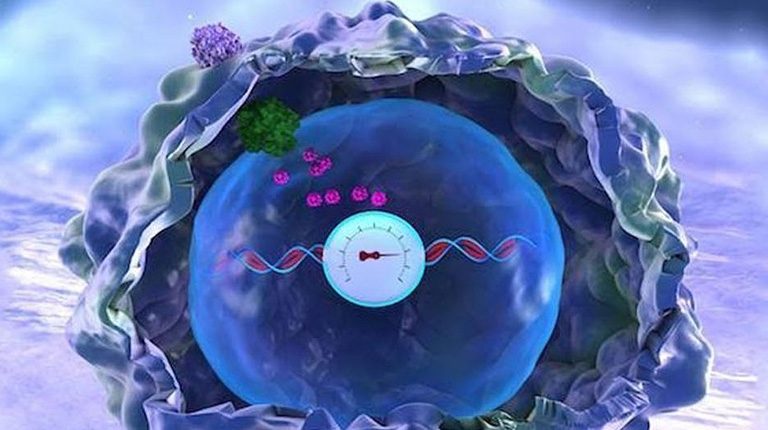Brain functions such as perception, learning, memory, and computing in the brain include the coordinated activity of a large population of nerve cells distributed throughout the brain. Today, despite the advancement of technology, tracking neuronal activity in the brain of healthy animals with high spatial and temporal resolution is challenging. One of the main obstacles to understanding these activities is the measurement of the activity of large populations of neurons distributed in the brain. Electrophysiology is a golden standard for monitoring brain activity due to the direct measurement of electrical activity of neurons directly, high-resolution time and the ability to quickly measure the activity of neurons. The main drawback of electrophysiological techniques is the use of invasive electrodes to capture signals and thus limit the resolution and 3D resolution of brain activity. Research on electrical probes has focused on overcoming these challenges by increasing the number of signal recorder sites while minimizing invasive states. These methods will inherently bring new challenges. A smaller probe with dimensions that minimizes the displacement of the texture, reduces the surface and volume of the electrode sites, connections and circuit components. Another challenge in electrophysiological methods is the use of biocompatible and flexible compounds that are in direct contact with brain tissues.

Recently, a group of researchers in Pasadena, California, designed a compact, modular, compact, and electrostatic electrostatic array for electrophysiology that addresses the challenges posed. The front of the system consists of a large number of high-density nano-fibers as non-destructive nerve scanners arranged on two-dimensional arrays. Finally, two-dimensional arrays are integrated with the use of nanoscale connectors as a 3D array in an exact structure with thousands of signal-receiving sites. The design of this 3D array is such that nondestructive tracing of the neural activity of the brain is possible with the scale and unmatched resolution. In order to reduce the destructive effects of the construction of these arrays, using special designs and several combinations of metal, polymer, insulator and semiconductor. The results of the study were published in the International Journal of Nanos in October 2016.
Source:



